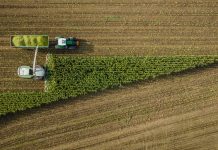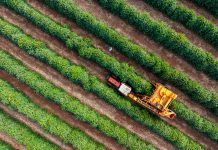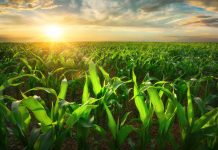Stoyan Tchoukanov is a member of the European Economic and Social Committee and the rapporteur for its opinion on Regenerative agriculture as a target towards enhancing sustainable food production, supporting climate and biodiversity objectives. Here, he elaborates on this topic, which is a new chapter of the EU green farming policy
The European Economic and Social Committee (EESC) recently became the first official EU body to explicitly recognise regenerative agriculture as a core strategy for transforming Europe’s food and farming systems. With our opinion adopted in June 2025, we aim to position regenerative practices not as experimental alternatives but as mainstream solutions to the multiple crises facing European agriculture: soil degradation, biodiversity loss, extreme climate events, generational renewal and rural decline.
Across Europe, farmers are contending with increasingly erratic weather, rising production costs and ever more complex regulations. At the same time, the farming sector is shrinking, with fewer young people entering the profession. While EU policy frameworks, such as the Common Agricultural Policy (CAP) and the European Green Deal, have extended sustainability goals, these efforts remain fragmented and insufficient to address the current challenges. We need a more coherent and ambitious policy framework, one that regenerates rather than merely sustains.
Regenerative forms of agriculture
Regenerative forms of agriculture can enhance sustainable food production and offer a positive narrative. This is a flexible, adaptive and outcome-oriented approach that improves soil health, restores biodiversity, enhances water cycles and boosts climate resilience, all while supporting long-term farm productivity. It is not defined by a rigid set of practices but by measurable improvements in environmental and socioeconomic indicators. Across the continent, farmers applying regenerative methods, such as cover cropping, low- or no-tillage, rotational grazing, agroforestry, and natural fertilisation, are already seeing the benefits: lower input costs, healthier crops, improved biodiversity, and greater resilience to drought and floods.
The EESC provides a practical and inclusive definition of regenerative agriculture: ‘an adaptive and holistic farming approach applying proven, science-based methods with positive impact on the environment, farming communities’ livelihoods and public health, ensuring resilience of yields, competitiveness and efficiency and social outcomes.’ This approach does not replace existing models, such as organic farming or agroecology, but complements and connects them, allowing for innovation across systems.
To scale this transition, we must rethink how success is measured. The EESC proposes the development of key performance indicators (KPIs) focused on tangible outcomes, such as organic carbon soil content, soil cover, plant diversity, water retention and year-on-year photosynthesis. These indicators can be tracked using existing monitoring systems and remote sensing technologies, minimising the administrative burden and ensuring comparability across regions. A shared data framework based on RA KPIs could align CAP funding, private investment, corporate sustainability reporting and advisory services – creating a more integrated and efficient policy landscape.
Policy alignment for regenerative forms of agriculture
Policy alignment is essential. Regenerative forms of agriculture must be embedded in the CAP post-2027, as well as in national strategic plans, the EU Soil Health Law, the Nature Restoration Law and broader rural development strategies. The EESC calls on both the European Commission and Member States to take coordinated action, including increasing funding for regenerative measures, simplifying regulations, investing in research and innovation, activating peer-to-peer advisory services, and supporting fair prices and land access for regenerative farmers.
Support must also address the risks associated with the transition. Changing farming systems is complex and often costly in the short term. We recommend targeted transition tools, including investment support, preferential credit and context-specific insurance schemes to help farmers adapt without bearing the full risk alone. These measures are essential for small farms, young farmers and those working on marginal land.
Then the market cannot be overlooked. Regenerative agriculture will only thrive if demand for its products grows. That requires public procurement policies, clear labelling, consumer awareness and fair value chains that recognise the environmental and social value generated by these farming systems. Food companies and retailers also have a role to play by redesigning their sourcing strategies, offering longer contracts and supporting crops and products that may currently lack market traction.
Regenerative agriculture in the years ahead
Regenerative agriculture provides not only practical tools but also a hopeful vision. It positions agriculture as a key solution to climate change, biodiversity loss and economic inequality. It empowers farmers as innovators and stewards of public goods. It opens up space for cooperation between food chain actors, science, business, policy and civil society. Most importantly, it inspires a new generation of farmers to see the land not just as a workplace but as a living system to be regenerated and sustained for the future.
This is a crucial moment. With the CAP reform, new environmental directives, and a growing public focus on food systems and food security, the EU has the opportunity to lead globally in regenerative farming. The tools and the knowledge are already here. What we need now is political will and policy coherence to make regeneration the new standard for agriculture in the European Union.











